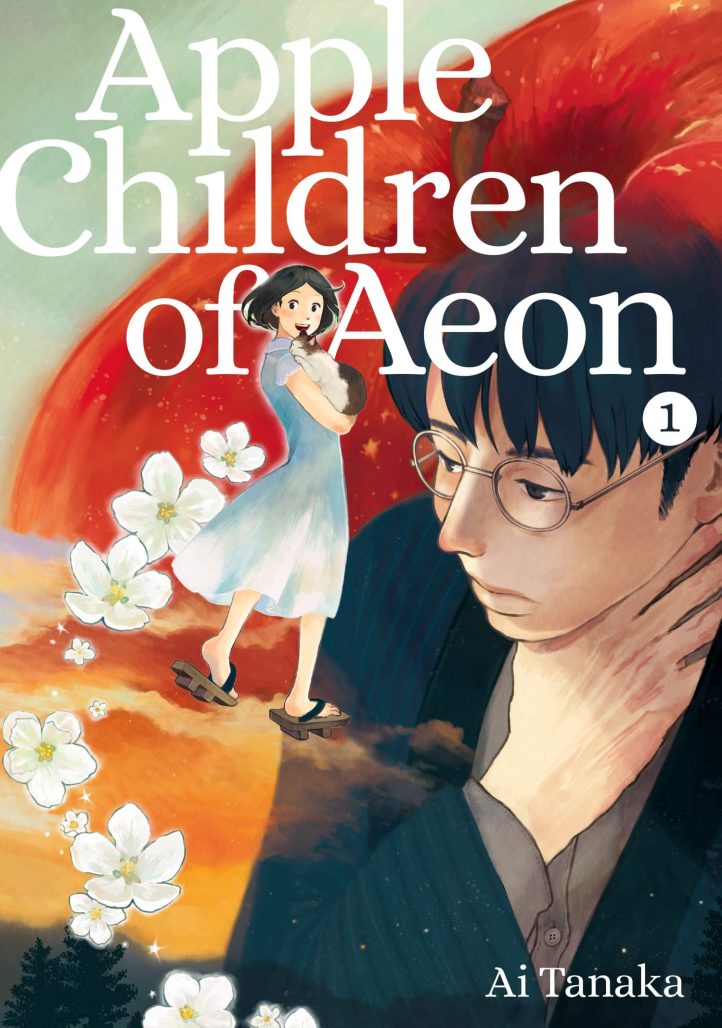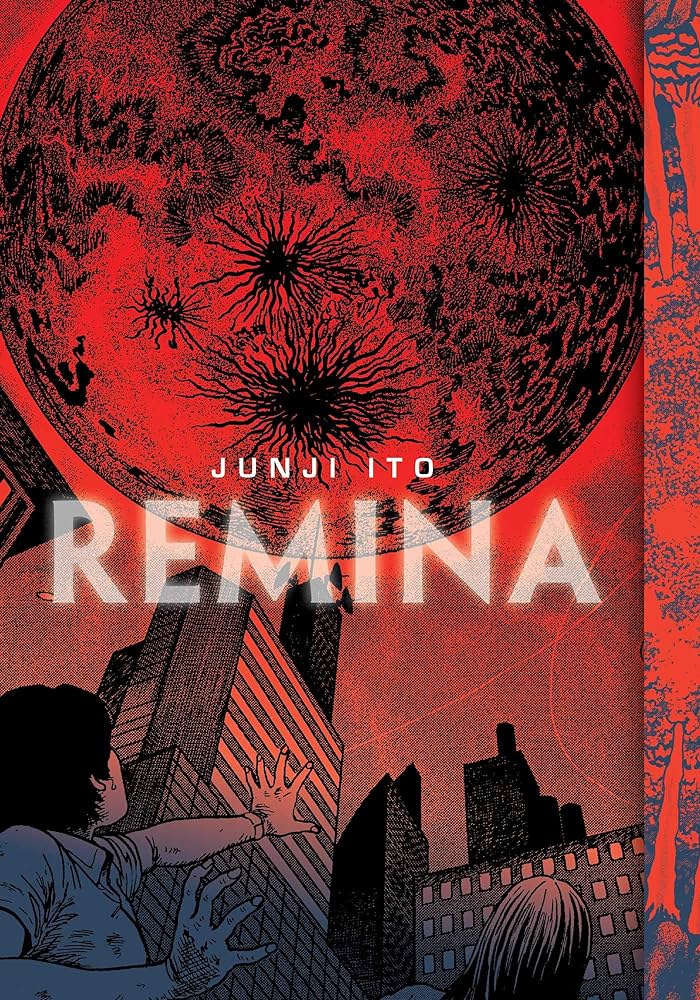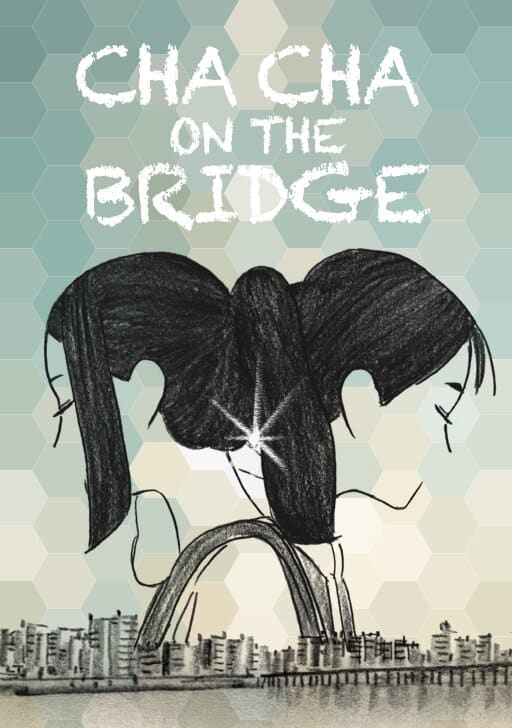There are two universal truths in today’s rapidly changing comics industry. The first is that dog man es the defining comic of our era. The second is that more people are reading manga and webtoons (aka vertical scroll comics) than ever before. Therefore we at The Beat have chosen to embark on a new venture: Beat’s Bizarre Adventure. Every week, we’ll have three writers recommend some of their favorite books and series from Japan, Korea, and elsewhere. This week we have a science fiction hidden gem, a spooky Shinto folktale, and, at last, Junji Ito.
CHA CHA on the Bridge
Writer: YUN PIL
Artist: Jessoo
Translator: Kyunghwa Lee
Publisher: pocket comics
In the near future, a human-shaped robot named Cha Cha is assigned to Mapo Bridge to talk humans down from killing themselves. Instead she is scorned by the populace as a waste of money. When the government abandons her, a patron of hers grants her a unique opportunity: the power to synchronize with all other robots on earth. She witnesses the life of a toy, a fast food robot, a machine that picks up roadkill. Meanwhile, another human-shaped robot named Ai runs a care community for older people. Will Cha Cha and Ai find a reason to live in humanity’s twilight days?
Throughout CHA CHA on the Bridge, robots across history witness the worst of humanity: fear, abuse, unrestrained greed. Yet the story isn’t as simple as “robots good, humans bad.” YUN PIL‘s script depicts a world in which both robots and humans are flawed beings struggling to understand themselves and each other. The real villain is society, which inevitably makes both humans and robots obsolete.
Jessoo‘s soft charcoal art is perfectly suited to the mood of the story. The cute and round character drawings soften the blow of each chapter just enough to be palatable. The backgrounds, meanwhile, find whimsy and dread in crumbling urban architecture. Jessoo also does a great job transitioning between story threads and perspectives. If I have a criticism, it’s that YUN PIL’s script jumps around in time enough that a reread may be necessary to piece everything together.
CHA CHA on the Bridge lacks nearly all of the tropes found in contemporary webtoons. It was published on pocket comics, a vertical comics app that today is packed with fantasy and romance stories. It has therefore been ignored by most English-language readers despite winning the grand prize for manhwa at the 6th SF Awards. If you’re a fan of science fiction authors like Stanislaw Lem or Greg Egan, I can’t recommend this series highly enough. It’s proof that webtoon treasure is out there so long as you know where to look. — Adam Westcott

Apple Children of Aeon
Writer/Artist: Ai Tanaka
Translator: Samuel R. Messner
Lettering: Darren Smith
Editing: Health Campos Blasco
Publisher: Kodansha
Yukinojo was abandoned as a baby in front of the doorstep of a loving family. They raised him as if he were their own son. But no matter how kind, accepting, and generous they were, Yukinojo wanted to leave the house as soon as he could. The only way to do that in 1970s Tokyo is to marry and settle down. Fortunately, he’s in luck: he finds Asahi, who comes from a family of apple farmers in Aomori Prefecture. They settle down together at Asahi’s family home in a rural town. Things take a very unexpected turn, though, when Yukinojo feeds Asahi an apple he isn’t supposed to.
Apple Children of Aeon is rooted Shintoism. A short while after settling down in the village, wanting to feed his sick wife some apple puree, Yukinojo takes a walk to the fields. He is pulled toward a distinct apple tree. Little does he know that this tree is a deity called Obosuna. According to local folk tales, women who eat an apple of Obosuna’s will be taken as a wife by the deity. In turn, the crops and the children will be protected.
The story becomes unsettling quickly. Asahi’s family and the townsfolk turn against Yukinojo, who knows they are keeping crucial information about the Obosuna myth from him. Nobody will help Yukinojo hold onto Asahi. I loved the way Ai Tanaka depicted the clash between the scientist Yukinojo, who at first searched for a reasonable explanation behind the tales, and the townsfolk who are reluctant to accept a “stranger” into their lives. Everything falls into place at the end, but these people sure made me want to punch a pillow or two.
The sacrificial bride is a very common motif in myths and folktales. Ai Tanaka uses a specific version told in Aomori Prefecture. The translator, Samuel R. Messner, found a similar version in Scotland. Therefore, to correspond to the Tsugaru dialect spoken in the Northern parts, Scottish English is used by the inhabitants of the town. The translation mostly flows well and the prose is quite poetic; However, as I’m not familiar with Scottish English, I found the use of dialect slow going.
Asahi and Yukinojo’s developing relationship is worth the patience. The pages match the pace of the story; they are gorgeous to look at, and very expressive. Clean is not the same as empty. Tanaka uses negative space to their advantage in dramatic scenes. I also found Messner’s many endnotes to be an absolute joy to read. Apple Children of Aeon may not be everyone’s cup of tea but if you enjoy magical realism, this series deserves a chance. — Merve Giray

Remina
Writer/Artist: Junji Ito
Translator: Jocelyne Allen
Publisher: VIZ Media
In space, no one can see you…play with your food?
Junji Ito needs no introduction. He’s a master of horror who has drawn many great manga in this genre. One such manga is Remina, a grand scale cosmic horror tale with eerie imagery and odd, yet fun scenarios. You know, classic Ito.
The story is about the unexplained link between a girl named Remina and a mysterious celestial body. Her father, who discovered it, names it after her. When the planet known as Remina begins to eat the planets within our solar system, the people of Earth realize that their time is nearly up. They attempt to sacrifice the girl Remina to sever the connection between them.
Unfortunately, they are too late and the planet Remina makes its way to Earth. From there all hell breaks loose as the sentient planet, acknowledging Earth’s inhabitants, becomes curious about these tiny creatures. It begins to play with its food. I won’t give any more details; you’ll just have to read it for yourself.
Remina is a fascinating little comic. Its biggest weakness is that we never learn much about Remina the girl. She remains throughout just as much a mystery as the planet which shares her name. But the scenarios she finds herself in because of these hellish events are fascinating and worth experiencing. — Derrick Crow
Follow Beat’s Bizarre Adventure to get weekly manga and webtoon recommendations!



